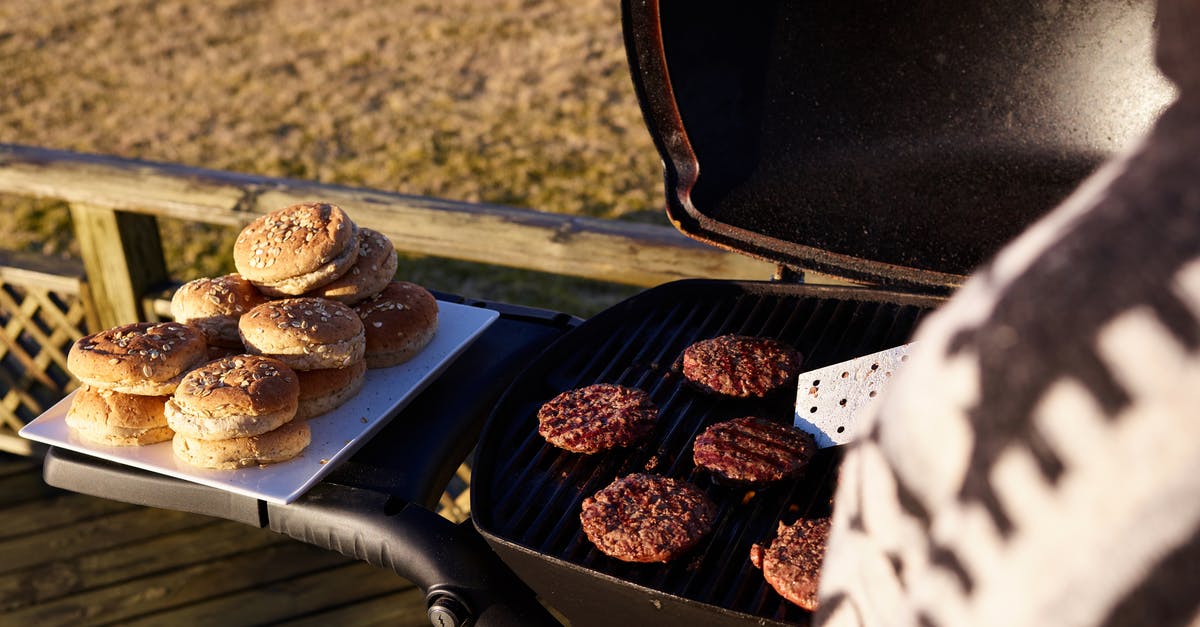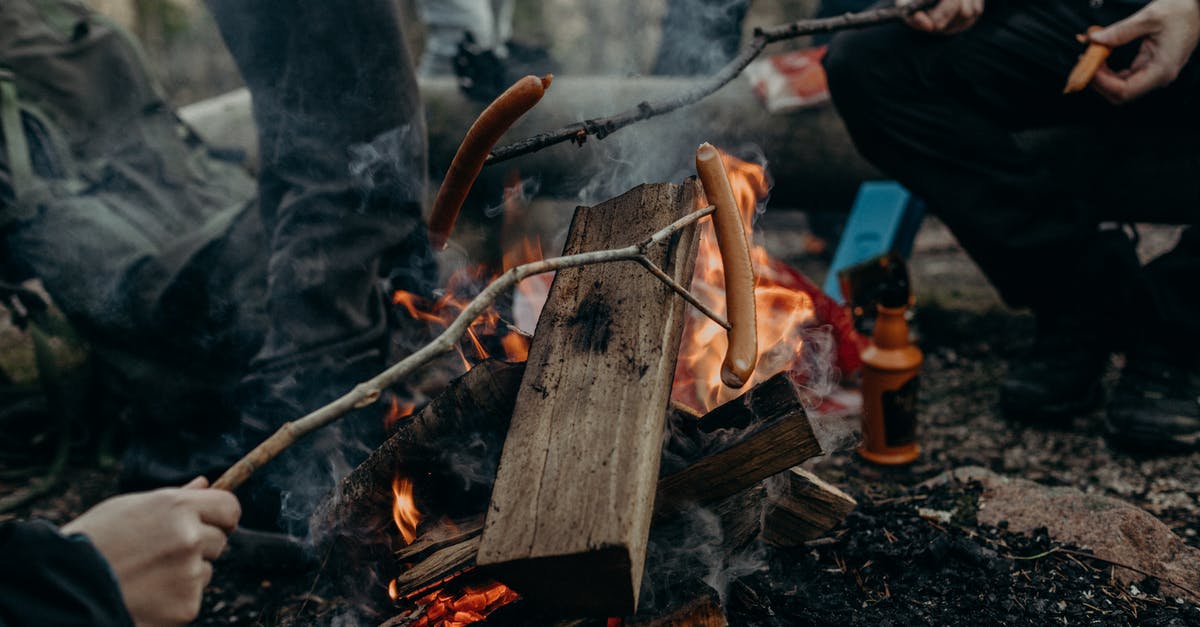Creating high-protein food for hiking

I will go hiking for 10 days, and the food I get in the lodges on the way is practically all starch, wtih < 15 g protein per day. I did this once and felt terrible. So this time, I want to take my own protein, but in the logistically best way.
Normal foods are out of question, even beef jerky doesn't breach 40% protein, and I don't want to lug such a low density on my back for several days. Protein bars are in the area of jerky. So my ingredient of choice seems to be the protein powder used to make workout shakes (82% protein). I don't want to take the powder as-is, because it is hard to handle on the road.
What I want to do is to make my own protein bars with this powder, but with a much higher density than the store-bought ones. I want to mix it with the least possible amount of a gluing agent. The end result should
- present no spilling danger (no liquid or powder)
- need no special utensils to eat
- have a long (at least 2 weeks) shelf life in a backpack under strong sunlight
- preferably not require special packaging (so not too sticky, but this can be relaxed if the solution meets the other criteria)
- not require any special equipment to produce (I don't have a dehydrator or such)
- not cause me to gag (I don't insist on a pleasant taste, but I should be able to get it down)
- have a really high protein density, in the best case over 70% (there are no other nutrition criteria; I am not worried by lots of carbs, E numbers, or lack of other essential nutrients)
- can be conveniently prepackaged as single portions (maybe 30 g protein per portion)
It is OK if the stuff is so concentrated in taste and dry matter that I have to gulp down half a bottle of water with it.
Any ideas what ingredients and techniques can be used for a solution which comes closest to fulfilling above criteria?
Best Answer
I normally make cookies using 1 cup almond butter, 1 egg, 1 c. sugar, perhaps you can substitute some of the sugar for protein powder and see how it goes? Now I'm somewhat interested in trying that myself!
According to nutrional data it looks like protein powder and egg whites have the most amount of protein in them, the list Foods highest in Protein may help.
Update: I ended up making a new batch of cookies, and they turned out great. Used 1c. almond butter, 1 egg, 3/4 c. double chocolate whey protein powder, 1/4 c. sugar 1 tsp baking soda. Bake at 350 for 12 minutes. They are a bit soft, but hold together well and aren't too crumbly until eaten, they seem to hold better after they are a day old.
Pictures about "Creating high-protein food for hiking"



Quick Answer about "Creating high-protein food for hiking"
What is the best food to eat while hiking?
3. For a Hike or Day Trip...- Trail mix.
- Nuts, seeds, nut-based bars or nut butter packs.
- Fresh, whole fruit that doesn't require refrigeration such as apples, bananas and oranges.
- Dried or freeze-dried fruits and veggies.
- Energy bars, chews or gels.
- Granola or granola bars.
- Ready-made tuna salad pouches.
- Whole-grain tortillas.
Is protein good for hiking?
Similar to endurance athletes, backpackers need to consume quality protein sources on the trail in order to repair muscle and stave off hunger ( 6 ). Protein bars are portable sources of high-quality protein that can fit any dietary preference, including veganism and vegetarianism.How much protein do I need a day when hiking?
As a general rule, you need 0.8-1 gram of protein for each kilo of body weight. If you are doing high-intensity hiking, you might need up to 1.5g/kg. *See a list of the best backpacking meal brands here.What should I eat for energy before a hike?
Eat a combination of complex carbohydrates and lean protein, 1-3 hours before a hike, for example:- A peanut butter and banana sandwich on whole wheat bread.
- Greek yogurt with berries.
- Oatmeal with low fat milk and fruit.
- Apple and peanut butter.
- A handful of nuts and raisins (2 parts raisins, 1 part nuts)
5 Easy Backpacking Meal Recipes [5 Ingredients or Less]
More answers regarding creating high-protein food for hiking
Answer 2
What about simply baking meringues? They're basically dried egg white with mostly consists of protein (Egg white nutrition data). You can simply take with a few as long as you can manage to keep them dry.
Answer 3
How do you feel about dried fish?
The link above has various size packages along with both fillets and bite size as you prefer, and it comes in at 81.8% protein. It pretty much meets all of your criteria, aside from not knowing if you like fish jerky or not. Anecdotal information suggests that hardfiskur is one of Iceland's more palatable native foods to foreigners.
Answer 4
Beef Jerky is the seminal high protein, long lasting, trekking food... Never tried making it, there's recipes on the web though (for example), and many places selling it.
I usually keep a few packets around the house for emergencies.
Answer 5
From the "long-life" point of view I'm thinking something fairly dry. From the storage and transport point of view I'm thinking a sort of biscuit or rusk type thing. Probably a very "heavy" one volume wise. You could add sugar to the recipe to make it palatable - I'm guessing that's not all bad for hiking.
Other typical ingredients would be flour, salt and liquid (milk, water, etc). Flavor as desired - I'm thinking probably nuts is in keeping with the protein requirement, however other flavorings may be physically lighter. Maybe eggs for binding.
I think you would need to experiment to get the flour content as low as possible, but still have it hold together suitable for transport. You might be able to use ground almonds instead of some of the flour - that will improve texture, flavor, and protein value.
It's not exactly a definitive answer I know but hopefully gives you some ideas to work with.
Answer 6
If the problem with protein powder was just mixing it, consider finding a wide mouthed water bottle. I prep packets of powder ahead of time (if you can get the mini zip lock bags, they're perfect) and then dump them in, shake while I'm walking, then guzzle/sip at my leisure. Nalgene are my bottle of choice, but your local camping store will have lots of options to chose from. The trick is the lid should be as wide as the bottle itself (or nearly so) and most water bottles don't do that, making it a pain to mix things. If you have water at your trailheads and you like your protein, you can't really get any better than that :)
If the problem was you didn't like carrying powder, then feel free to disregard. :D
Answer 7
Strange that nobody mentioned pemmican:
Pemmican is a concentrated mixture of fat and protein used as a nutritious food.
It's usually made by mixing fat, dried meat and dried fruit. A dehydrator is recommended, but it seems an oven can also be used. Another issue could be obtaining the fat/suet; with a bit of luck off-the-shelf suet might be available (reportedly, Atora shredded suet works for cooking pemmican; one could also try coconut oil).
In addition, there are some pemmican-inspired recipes floating around.
Answer 8
You could try using dates as the "glue" -- yes, they're sticky, but much less so if you cut them with something (your protein powder, or ground nuts, or whatever). And they're easy to work with; I've made date/nut/fruit bars with a potato masher (although a food processor makes it much easier).
Then after shaping, dry as much as possible (consider using an oven < 200 F ?) to get the water content down to reduce spoilage.
You may need to add sugar as a preservative: if the sugar content is high enough, it should prevent bacteria+mold growth. I'm not sure what the minimum sugar content for that but I would guess it's less than 30%.
Sources: Stack Exchange - This article follows the attribution requirements of Stack Exchange and is licensed under CC BY-SA 3.0.
Images: ArtHouse Studio, Nicolette Attree, Artem Beliaikin, PNW Production
